Anthology 2. Luminous [1998, 2010] Read online
CRITICAL ACCLAIM FOR GREG EGAN
‘One of the genre’s great ideas men’
The Times
‘The universe may be stranger than we can imagine, but it’s going to have a hard time outdoing Egan’
New Scientist
‘Science fiction as it should be’
Odyssey
‘Brilliant. Fantastic, mind-stretching … Revel in it. We’ll not see its like for a while’
Starburst
‘Greg Egan is central to contemporary science fiction’
Interzone
‘Qualifies as grand speculation in the purest sense … stunning’
Locus
‘Greg Egan is the 21st century’s most important SF writer … Read Egan today, because it’s what everybody else will be reading tomorrow’
Stephen Baxter
‘Immensely exhilarating. Sweeps the reader along like a cork on a tidal wave’
Sydney Morning Herald
‘[Greg Egan] reveals wonders with an artistry to equal his audacity’
New York Review of Science Fiction
‘Wonderful, mind-expanding stuff, and well written too’
Guardian
‘In a time when it’s frequently claimed that SF holds no more surprises Egan casts a coldly innovative eye on old themes … Egan’s visions of the future glow with gloomy intellectual fire. Luminous indeed’
Amazon.co.uk
COPYRIGHT
A Gollancz eBook
Copyright © Greg Egan 1998 All rights reserved.
The right of Greg Egan to be identified as the author of this work has been asserted by him in accordance with the Copyright, Designs and Patents Act 1988.
First published in Great Britain in 1998 by Millennium
This eBook first published in 2010 by Gollancz.
The Orion Publishing Group Ltd
Orion House
5 Upper Saint Martin’s Lane
London, WC2H 9EA
An Hachette UK Company
A CIP catalogue record for this book is available from the British Library.
ISBN 978 0 575 10544 7
All characters and events in this publication are fictitious and any resemblance to real persons, living or dead, is purely coincidental.
No part of this publication may be reproduced, stored in a retrieval system or transmitted in any form or by any means, without the prior permission in writing of the publisher, nor to be otherwise circulated in any form of binding or cover other than that in which it is published without a similar condition, including this condition, being imposed on the subsequent purchaser.
www.gregegan.net
www.orionbooks.co.uk
ALSO BY GREG EGAN FROM GOLLANCZ
Quarantine
Permutation City
Axiomatic
Distress
Teranesia
Diaspora
Schild’s Ladder
LUMINOUS
GREG EGAN
CONTENTS
Critical Acclaim for Greg Egan
Also By Greg Egan From Gollancz
Chaff
Mitochondrial Eve
Luminous
Mister Volition
Cocoon
Transition Dreams
Silver Fire
Reasons to be Cheerful
Our Lady of Chernobyl
The Planck Dive
Acknowledgements
Copyright
CHAFF
El Nido de Ladrones – the Nest of Thieves – occupies a roughly elliptical region, fifty thousand square kilometres in the western Amazon Lowlands, straddling the border between Colombia and Peru. It’s difficult to say exactly where the natural rain forest ends and the engineered species of El Nido take over, but the total biomass of the system must be close to a trillion tonnes. A trillion tonnes of structural material, osmotic pumps, solar energy collectors, cellular chemical factories, and biological computing and communications resources. All under the control of its designers.
The old maps and databases are obsolete; by manipulating the hydrology and soil chemistry, and influencing patterns of rainfall and erosion, the vegetation has reshaped the terrain completely: shifting the course of the Putumayo River, drowning old roads in swampland, raising secret causeways through the jungle. This biogenic geography remains in a state of flux, so that even the eyewitness accounts of the rare defectors from El Nido soon lose their currency. Satellite images are meaningless; at every frequency, the forest canopy conceals, or deliberately falsifies, the spectral signature of whatever lies beneath.
Chemical toxins and defoliants are useless; the plants and their symbiotic bacteria can analyse most poisons, and reprogram their metabolisms to render them harmless – or transform them into food – faster than our agricultural warfare expert systems can invent new molecules. Biological weapons are seduced, subverted, domesticated; most of the genes from the last lethal plant virus we introduced were found three months later, incorporated into a benign vector for El Nido’s elaborate communications network. The assassin had turned into a messenger boy. Any attempt to burn the vegetation is rapidly smothered by carbon dioxide – or more sophisticated fire retardants, if a self-oxidising fuel is employed. Once we even pumped in a few tonnes of nutrient laced with powerful radioisotopes – locked up in compounds chemically indistinguishable from their natural counterparts. We tracked the results with gamma-ray imaging: El Nido separated out the isotope-laden molecules – probably on the basis of their diffusion rates across organic membranes – sequestered and diluted them, and then pumped them right back out again.
So when I heard that a Peruvian-born biochemist named Guillermo Largo had departed from Bethesda, Maryland, with some highly classified genetic tools – the fruits of his own research, but very much the property of his employers – and vanished into El Nido, I thought: At last, an excuse for the Big One. The Company had been advocating thermonuclear rehabilitation of El Nido for almost a decade. The Security Council would have rubber-stamped it. The governments with nominal authority over the region would have been delighted. Hundreds of El Nido’s inhabitants were suspected of violating US law – and President Golino was aching for a chance to prove that she could play hard ball south of the border, whatever language she spoke in the privacy of her own home. She could have gone on prime time afterwards and told the nation that they should be proud of Operation Back to Nature, and that the thirty thousand displaced farmers who’d taken refuge in El Nido from Colombia’s undeclared civil war – and who had now been liberated for ever from the oppression of Marxist terrorists and drug barons – would have saluted her courage and resolve.
I never discovered why that wasn’t to be. Technical problems in ensuring that no embarrassing side-effects would show up down-river in the sacred Amazon itself, wiping out some telegenic endangered species before the end of the present administration? Concern that some Middle Eastern warlord might somehow construe the act as licence to use his own feeble, long-hoarded fission weapons on a troublesome minority, destabilising the region in an undesirable manner? Fear of Japanese trade sanctions, now that the rabidly anti-nuclear Eco-Marketeers were back in power?
I wasn’t shown the verdicts of the geopolitical computer models; I simply received my orders – coded into the flicker of my local K-Mart’s fluorescent tubes, slipped in between the updates to the shelf price tags. Deciphered by an extra neural layer in my left retina, the words appeared blood red against the bland cheery colours of the supermarket aisle.
I was to enter El Nido and retrieve Guillermo Largo.
Alive.
* * *
Dressed like a local real-estate agent – right do
wn to the gold-plated bracelet-phone, and the worst of all possible three-hundred-dollar haircuts – I visited Largo’s abandoned home in Bethesda: a northern suburb of Washington, just over the border into Maryland. The apartment was modern and spacious, neatly furnished but not opulent – about what any good marketing software might have tried to sell him, on the basis of salary less alimony.
Largo had always been classified as brilliant but unsound – a potential security risk, but far too talented and productive to be wasted. He’d been under routine surveillance ever since the gloriously euphemistic Department of Energy had employed him, straight out of Harvard, back in 2005 – clearly, too routine by far … but then, I could understand how thirty years with an unblemished record must have given rise to a degree of complacency. Largo had never attempted to disguise his politics – apart from exercising the kind of discretion that was more a matter of etiquette than subterfuge; no Che Guevara T-shirts when visiting Los Alamos – but he’d never really acted on his beliefs, either.
A mural had been jet-sprayed onto his living-room wall in shades of near infra-red (visible to most hip fourteen-year-old Washingtonians, if not to their parents). It was a copy of the infamous Lee Hing-cheung’s A Tiling of the Plane with Heroes of the New World Order, a digital image that had spread across computer networks at the turn of the century. Early nineties political leaders, naked and interlocked – Escher meets the Kamasutra – deposited steaming turds into each other’s open and otherwise empty braincases, an effect borrowed from the works of the German satirist George Grosz. The Iraqi dictator was shown admiring his reflection in a hand mirror – the image an exact reproduction of a contemporary magazine cover in which the moustache had been retouched to render it suitably Hitleresque. The US President carried – horizontally, but poised ready to be tilted – an egg-timer full of the gaunt hostages whose release he’d delayed to clinch his predecessor’s election victory. Everyone was shoe-horned in, somewhere – right down to the Australian Prime Minister, portrayed as a pubic louse, struggling (and failing) to fit its tiny jaws around the mighty presidential cock. I could imagine a few of the neo-McCarthyist troglodytes in the Senate going apoplectic if anything so tedious as an inquiry into Largo’s defection ever took place, but what should we have done? Refused to hire him if he owned so much as a Guernica tea-towel?
Largo had blanked every computer in the apartment before leaving, including the entertainment system, but I already knew his taste in music, having listened to a few hours of audio surveillance samples full of bad Korean Ska. No laudable revolutionary ethno-solidarity, no haunting Andean pipe music; a shame – I would have much preferred that. His bookshelves held several battered college-level biochemistry texts, presumably retained for sentimental reasons, and a few dozen musty literary classics and volumes of poetry, in English, Spanish, and German. Hesse, Rilke, Vallejo, Conrad, Nietzsche. Nothing modern – and nothing printed after 2010. With a few words to the household manager, Largo had erased every digital work he’d ever owned, sweeping away the last quarter of a century of his personal archaeology.
I flipped through the surviving books, for what it was worth. There was a pencilled-in correction to the structure of guanine in one of the texts … and a section had been underlined in ‘Heart of Darkness’. The narrator, Marlow, was pondering the mysterious fact that the servants on the steamboat – members of a cannibal tribe, whose provisions of rotting hippo meat had been tossed overboard – hadn’t yet rebelled and eaten him. After all:
No fear can stand up to hunger, no patience can wear it out, disgust simply does not exist where hunger is; and as to superstition, beliefs, and what you may call principles, they are less than chaff in a breeze.
I couldn’t argue with that – but I wondered why Largo had found the passage noteworthy. Perhaps it had struck a chord, back in the days when he’d been trying to rationalise taking his first research grants from the Pentagon? The ink was faded – and the volume itself had been printed in 2003. I would rather have had copies of his diary entries for the fortnight leading up to his disappearance, but his household computers hadn’t been systematically tapped for almost twenty years.
I sat at the desk in his study, and stared at the blank screen of his work station. Largo had been born into a middle-class, nominally Catholic, very mildly leftist family in Lima, in 1980. His father, a journalist with El Comercio, had died from a cerebral blood clot in 2029. His seventy-eight-year-old mother still worked as an attorney for an international mining company – going through the motions of habeas corpus for the families of disappeared radicals in her spare time, a hobby her employers tolerated for the sake of cheap PR Brownie points in the shareholder democracies. Guillermo had one elder brother, a retired surgeon, and one younger sister, a primary-school teacher, neither of them politically active.
Most of his education had taken place in Switzerland and the States; after his PhD, he’d held a succession of research posts in government institutes, the biotechnology industry, and academia – all with more or less the same real sponsors. Fifty-five, now, thrice divorced but still childless, he’d only ever returned to Lima for brief family visits.
After three decades working on the military applications of molecular genetics – unwittingly at first, but not for long – what could have triggered his sudden defection to El Nido? If he’d managed the cynical doublethink of reconciling defence research and pious liberal sentiments for so long, he must have got it down to a fine art. His latest psychological profile suggested as much: fierce pride in his scientific achievements balanced the self-loathing he felt when contemplating their ultimate purpose – with the conflict showing signs of decaying into comfortable indifference. A well-documented dynamic in the industry.
And he seemed to have acknowledged – deep in his heart, thirty years ago – that his ‘principles’ were less than chaff in a breeze.
Perhaps he’d decided, belatedly, that if he was going to be a whore he might as well do it properly, and sell his skills to the highest bidder – even if that meant smuggling genetic weapons to a drugs cartel. I’d read his financial records, though: no tax fraud, no gambling debts, no evidence that he’d ever lived beyond his means. Betraying his employers, just as he’d betrayed his own youthful ideals to join them, might have seemed like an appropriately nihilistic gesture, but, on a more pragmatic level, it was hard to imagine him finding the money, and the consequences, all that tempting. What could El Nido have offered him? A numbered satellite account, and a new identity in Paraguay? All the squalid pleasures of life on the fringes of the Third World plutocracy? He would have had everything to gain by living out his retirement in his adopted country, salving his conscience with one or two vitriolic essays on foreign policy in some unread left-wing netzine – and then finally convincing himself that any nation that granted him such unencumbered rights of free speech probably deserved everything he’d done to defend it.
Exactly what he had done to defend it, though – what tools he’d perfected, and stolen – I was not permitted to know.
* * *
As dusk fell, I locked the apartment and headed south down Wisconsin Avenue. Washington was coming alive, the streets already teeming with people looking for distraction from the heat. Nights in the cities were becoming hallucinatory. Teenagers sported bioluminescent symbionts, the veins in their temples, necks, and pumped-up forearm muscles glowing electric blue, walking circulation diagrams who cultivated hypertension to improve the effect. Others used retinal symbionts to translate IR into visible light, their eyes flashing vampire red in the shadows.
And others, less visibly, had a skull full of White Knights.
Stem cells in the bone marrow infected with Mother – an engineered retrovirus – gave rise to something halfway between an embryonic neuron and a white blood cell. White Knights secreted the cytokines necessary to unlock the blood-brain barrier – and, once through, cellular adhesion molecules guided them to their targets, where they could flood the site with a ch
osen neurotransmitter – or even form temporary quasi-synapses with genuine neurons. Users often had half a dozen or more sub-types in their bloodstream simultaneously, each one activated by a specific dietary additive: some cheap, harmless, and perfectly legitimate chemical not naturally present in the body. By ingesting the right mixture of innocuous artificial colourings, flavours and preservatives, they could modulate their neurochemistry in almost any fashion – until the White Knights died, as they were programmed to do, and a new dose of Mother was required.
Mother could be snorted, or taken intravenously, but the most efficient way to use it was to puncture a bone and inject it straight into the marrow – an excruciating, messy, dangerous business, even if the virus itself was uncontaminated and authentic. The good stuff came from El Nido. The bad stuff came from basement labs in California and Texas, where gene hackers tried to force cell cultures infected with Mother to reproduce a virus expressly designed to resist their efforts – and churned out batches of mutant strains ideal for inducing leukaemia, astrocytomas, Parkinson’s disease, and assorted novel psychoses.
Crossing the sweltering dark city, watching the heedlessly joyful crowds, I felt a penetrating, dream-like clarity come over me. Part of me was numb, leaden, blank – but part of me was electrified, all-seeing. I seemed to be able to stare into the hidden landscapes of the people around me, to see deeper than the luminous rivers of blood; to pierce them with my vision right to the bone.

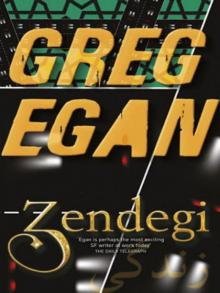 Zendegi
Zendegi Permutation City
Permutation City The Eternal Flame
The Eternal Flame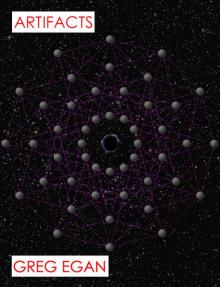 Artifacts
Artifacts Wang's Carpets
Wang's Carpets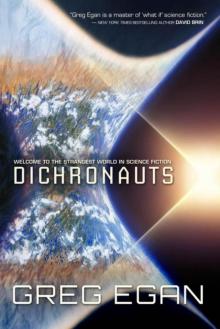 Dichronauts
Dichronauts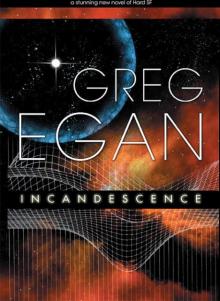 Incandescence
Incandescence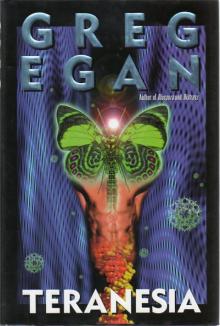 Teranesia
Teranesia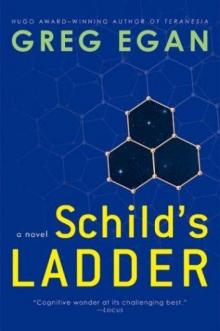 Schild's Ladder
Schild's Ladder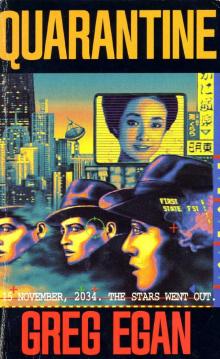 Quarantine
Quarantine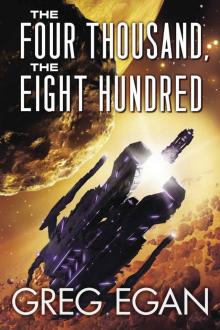 The Four Thousand, the Eight Hundred
The Four Thousand, the Eight Hundred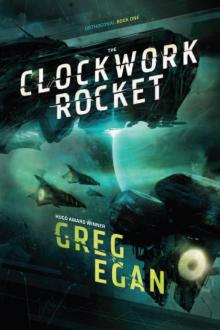 The Clockwork Rocket
The Clockwork Rocket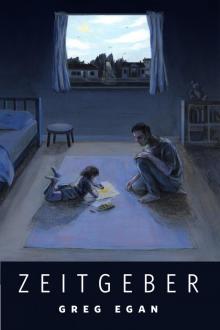 Zeitgeber
Zeitgeber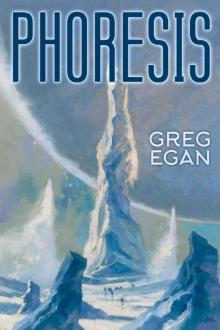 Phoresis
Phoresis The Nearest
The Nearest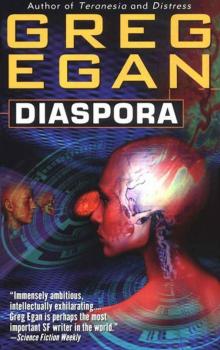 Diaspora
Diaspora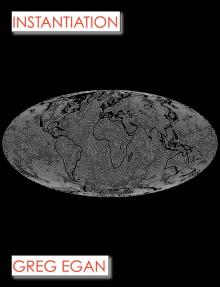 Instantiation
Instantiation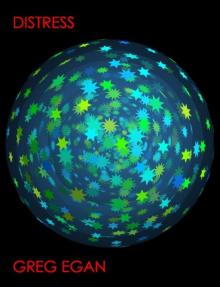 Distress
Distress An Unusual Angle
An Unusual Angle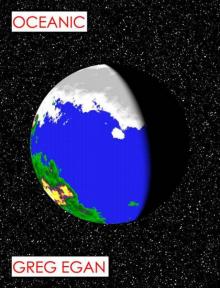 Oceanic
Oceanic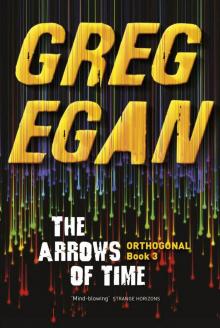 The Arrows of Time
The Arrows of Time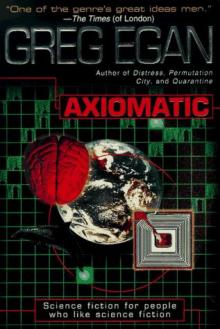 Axiomatic
Axiomatic![Anthology 2. Luminous [1998, 2010] Read online](http://i1.bookreadfree.com/i/03/18/anthology_2_luminous_1998_2010_preview.jpg) Anthology 2. Luminous [1998, 2010]
Anthology 2. Luminous [1998, 2010]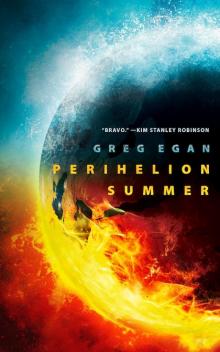 Perihelion Summer
Perihelion Summer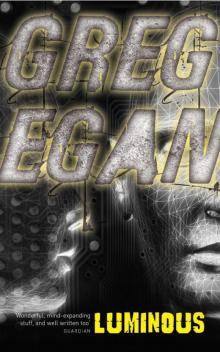 Luminous
Luminous